What an adventure the past six days have been! While our time at Isla Cañas has been amazing, we did not have any internet access on the island so in-country staff were unable to post any blog updates until now. Stay on the lookout for news and updates on all of the exciting things your Block A participants are up to in the following days! This post will be particularly long in order to catch you all up on everything that we have been doing. We will also now be able to post regularly on our Instagram account, so follow us at instagram.com/discoveramigospanama!
The following morning after participants arrived in Panama City, everyone woke up bright and early in order to hop on the bus and make the journey to Isla Cañas. Once we arrived to the estuary where Isla Cañas is located, we got on a panga, or small boat, in order to cross over to the island.
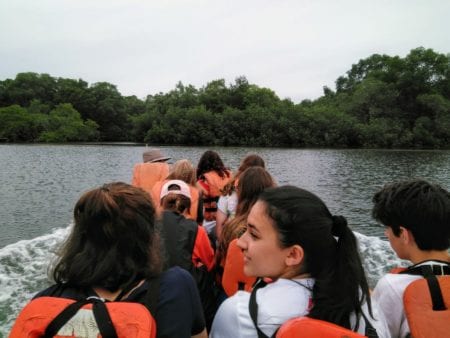
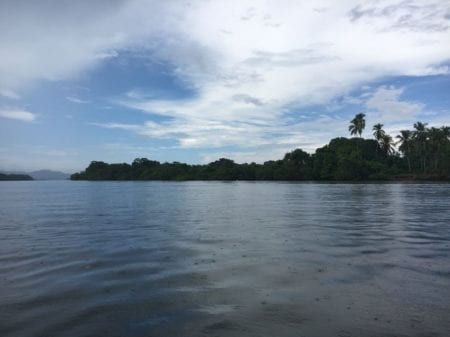
One of the first things we did upon arrival was meet with our incredible partners, the Policía Ecológica, or environmental police. The officers, Subteniente Corrales and Sargente Acosta, led our group on daily environmental conservation activities as well as gave charlas, or talks, about various environmental education topics.
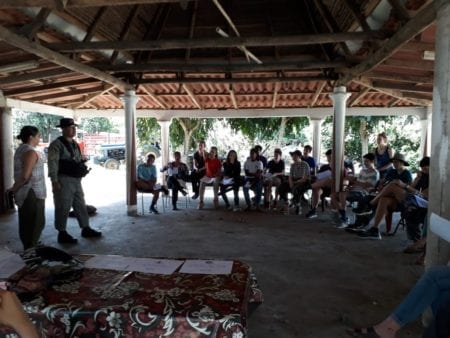
The police then led our group on a tour of the island. Isla Cañas is home to about 350 people. It is a small, tight-knit community where most people make a living by fishing or digging and selling shellfish. The sun had begun to set as we walked around island, giving us some of these beautiful views:
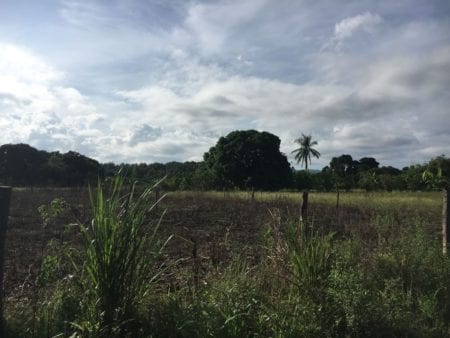
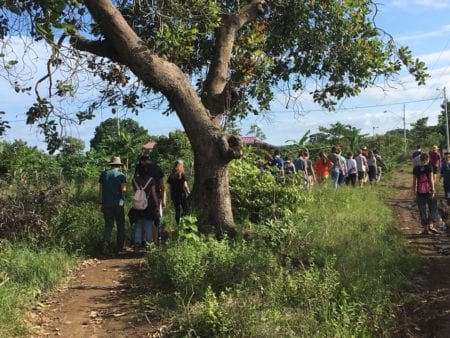
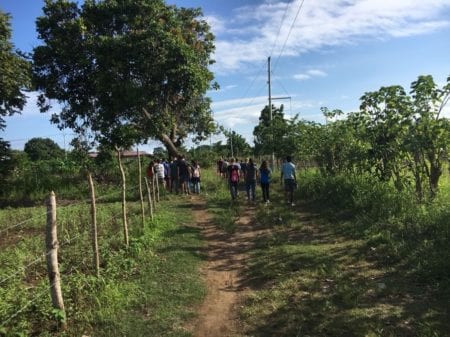
We finished our tour along the beach. The beach is made up of 14km of black sand (which had a tendency of following us back to our rooms and being ridiculously difficult to clean!) and is a hotspot for sea turtles to come lay their eggs. There is an entire area of the beach that is protected as a natural hatchery for turtle eggs, making it illegal for people to collect eggs laid in that area. As the Policía told us, during the high nesting season for sea turtles, there can be 100-200 sea turtles along the beach laying eggs at the same time. It is even possible for there to be up to 2,000 turtles that lay their eggs on the beach in a single night! Due to Isla Cañas receiving thousands of sea turtles and their eggs each year, it makes the work that the Policía Ecológica and the activities that the participants supported that much more important.
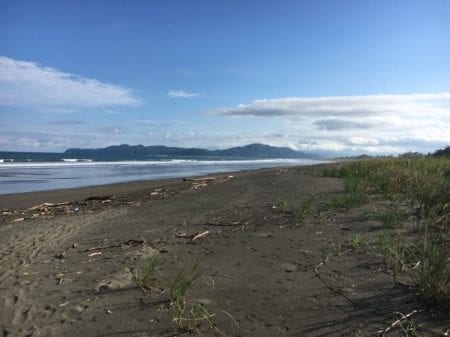
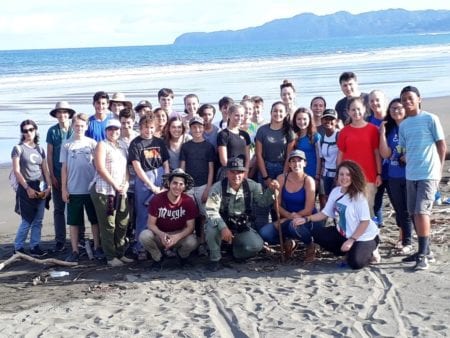
At the end of our tour, we headed to Doña Victoria’s house for dinner. Doña Victoria lives on the island and cooked traditional Panamanian food for all of our meals for our entire group. Some of the highlights of her cooking was rice with lentils or beans, fried chicken or chicken in red sauce, fried plaintains, pasta, and even mashed potatoes one day. In addition to Doña Victoria’s cooking, the Policía would bring us fresh mangoes collected directly from the many mango trees on the island. After dinner, the group returned to our hostal where we had our first nightly reflection and then free time to play games and get to know one another until bedtime.
Our second day on the island started off with a beach clean-up. The Policía explained to our group that while there was trash that was produced by the island, the vast majority of the trash that washed up onto the beaches originated from other places, especially from petroleum and fishing ships.
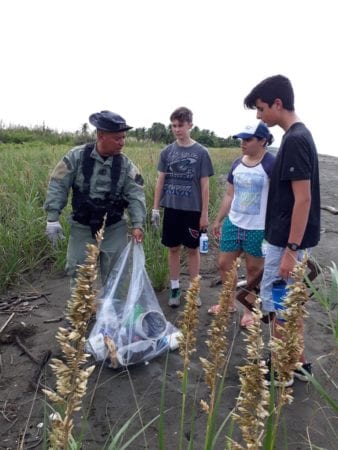
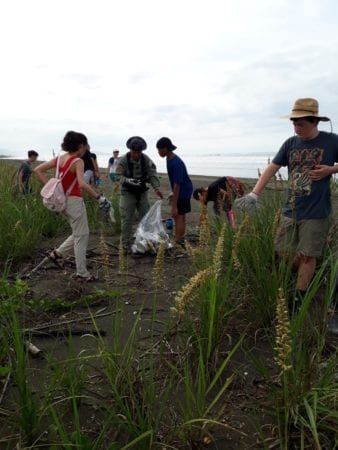
That afternoon, it began to rain hard. It is currently the rainy season in Panama, which the participants learned that meant they would be getting wet quite often! While most days it would rain lightly throughout the day or it would rain hard for a short time, we experienced a full rainstorm!
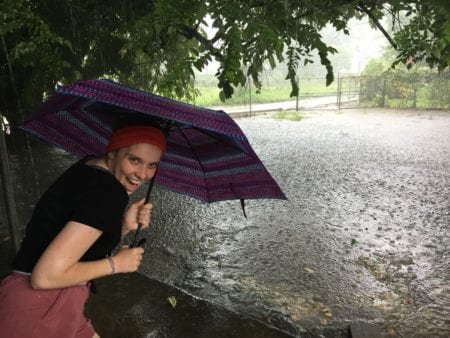
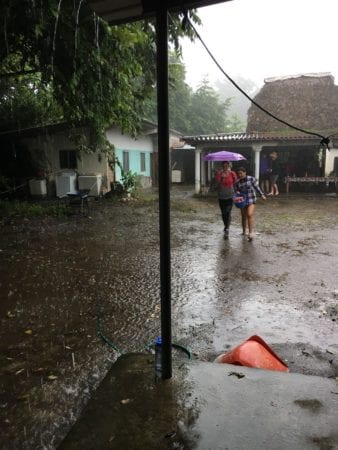
Day 3 was our longest day and filled with a lot of adventure! First, we hiked along the beach to make it to the vivero, or turtle hatchery. Once we arrived, we split into two groups – one group to clean-up the plastics and other trash that can impede the sea turtles from laying their eggs and the other to clean out the turtle hatchery. In the last year alone, the Policía Ecológica, in collaboration with representatives from environmental organizations, helped hatch 165,000 baby sea turtles. The participants spent time digging out the sand and collecting and throwing away the old eggshells from which the baby turtles had hatched. This was a very important task as old eggshells can prevent newborn sea turtles from being able to dig their way out of the nest.
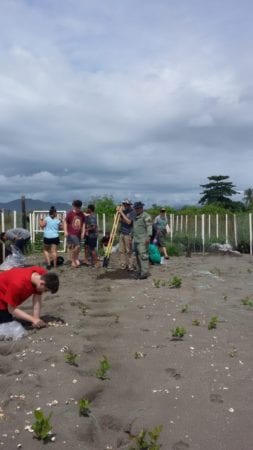
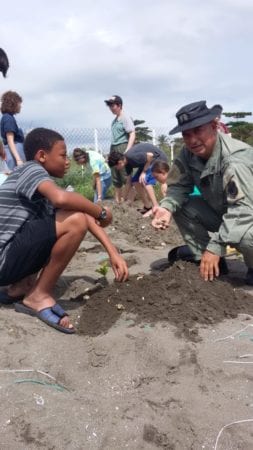

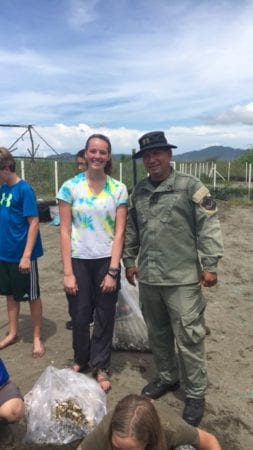
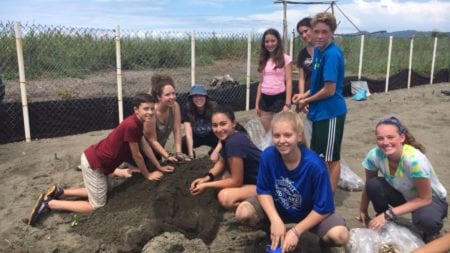
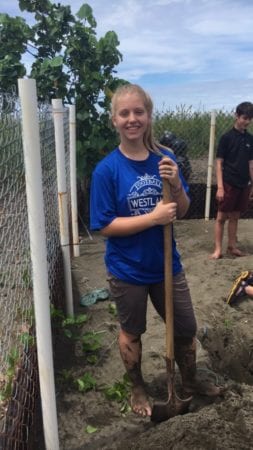
That afternoon, we organized a community soccer game on the beach with local youth from the island. The participants and locals played on mixed teams and had the opportunity to really practice their Spanish!

That night around 8:30PM, the Policía led our group on a night patrol to search for sea turtles laying eggs. The police do nightly patrols to find nesting turtles and collect their eggs in order to bury the eggs in the hatchery so they are better protected from natural predators like birds, dogs, and especially humans. Normally, sea turtles like to come onto the beach to lay their eggs on moonless nights. Since it was a full moon that night, we didn’t have high hopes that we would manage to see any sea turtles. However, luck was on our side and we were lucky enough to come across a big sea turtle who was laying eggs on the beach!
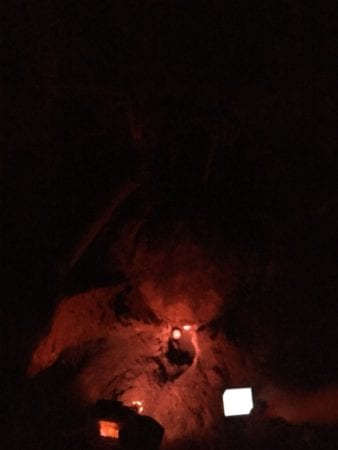
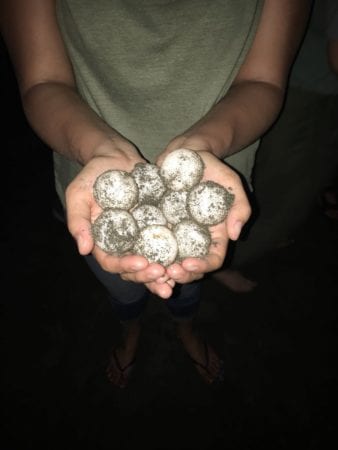
Getting to see a sea turtle and help preserve her eggs was an amazing, unique experience. However, after such a long day and night, participants fell right to sleep once we returned back home!
Day 4 in Isla Cañas started off with helping construct seashell paths in the community. Especially during rainy season, the dirt paths flood very easily, making it difficult to walk from the center of the community to the beach. Locals who collect and sell shellfish collect piles of discarded shells, which the community then uses to create walking paths throughout the muddiest paths. Participants spent the morning collecting bags and wheelbarrows full of the shells to then spread the shells and lengthen the paths of shells. This activity was excellent as it had an immediate impact for those living in Isla Cañas, especially for people like Doña Victoria who are normally unable to leave their home when it rains because the shell path isn’t long enough to walk safely to the center of town.
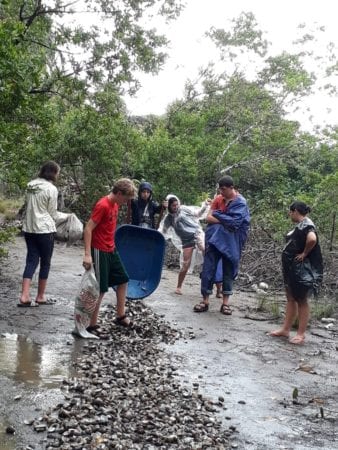

That afternoon, participants had time to go swimming at the beach and play in the waves. In addition, participants learned which community they would be living in for the next week as well as who their partners would be in their host family homes. The participants were excited to learn whether they would be living in Bella Vista, Aguas Blancas, or Sonadora over the next week!
Our last morning at Isla Cañas consisted of packing, cleaning, and saying goodbye to all of the people who helped make our visit possible. In addition, it meant saying goodbye to the special friends the participants made, including our 5-year-old neighbor, Juan.
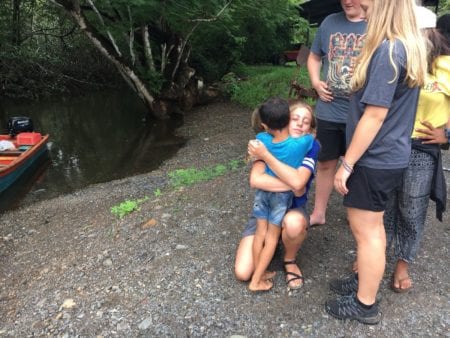
Although it was sad to say goodbye, the participants made many memories over the course of the 5 intense, crazy, fun, exhausting days at Isla Cañas. While this chapter of the trip has ended, there is still much more to come over the following days! Thank you for reading and stay tuned for our next update!

